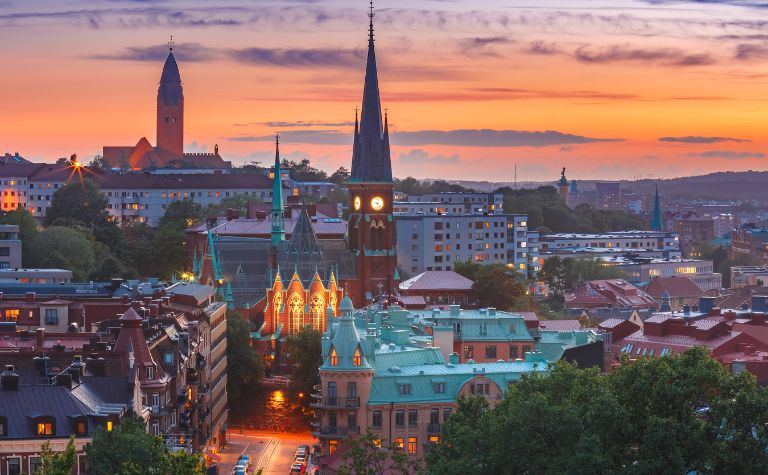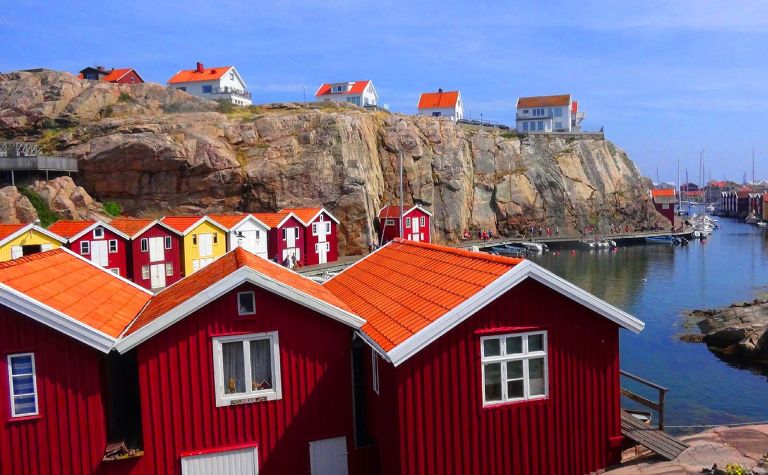The existence and perception of “slums” in Sweden is a debated topic. In this article, we will address the conditions of economically disadvantaged neighborhoods and the nuances in defining them as “slums.”
Sweden has disadvantaged neighborhoods with high unemployment and immigrant populations, often labeled as “ghettos.”
These areas, unlike global slums, lack extreme poverty or hazardous conditions. Public opinion varies, and efforts to combat segregation are in place.
Why are there disadvantaged neighborhoods in Sweden if the country is rich? What factors contribute to these growing areas? What are “no-go” zones in Sweden?
Keep reading to learn more.
Also, see What Do Swedes Eat for Lunch? to learn more.

Understanding Swedish Socio-Economic Landscape
Sweden is globally recognized for its comprehensive welfare system, often referred to as the “Nordic Model.”
This system is characterized by universal healthcare, free education, and generous social benefits, all funded by high taxes.
These policies aim to reduce social inequality and ensure a high standard of living for all citizens.
However, despite these efforts, Sweden still grapples with socio-economic issues. Income inequality, although relatively low compared to other countries, has been steadily rising since the 1990s.
The top 20% of earners in Sweden make four times as much as the bottom 20%, according to the Organisation for Economic Co-operation and Development (OECD).
Migration is another significant factor in Sweden’s socio-economic landscape. Since the early 2000s, Sweden has accepted a high number of immigrants relative to its population size.
While these newcomers contribute to the country’s cultural diversity, their integration into Swedish society, particularly in the job market, has been challenging.
This situation has led to a concentration of immigrants in certain neighborhoods, which often have higher unemployment rates and lower incomes than average.
The housing in these areas, typically comprising apartments built during the “Million Programme” era of the 1960s and 1970s, has often been associated with social housing.
However, the living conditions in these areas, while not ideal, do not align with the conventional definition of slums.
In the next section, we’ll delve deeper into the nature of these neighborhoods and whether they can be classified as ‘slums.’
Comparing Sweden’s economy with Denmark’s and Norway’s
- GDP (Nominal):
- Sweden: $530 billion (approx.)
- Norway: $390 billion (approx.)
- Denmark: $350 billion (approx.)
- GDP Per Capita:
- Sweden: $52,000 (approx.)
- Norway: $73,000 (approx.)
- Denmark: $60,000 (approx.)
- Unemployment Rate:
- Sweden: 6.4% (approx.)
- Norway: 4.0% (approx.)
- Denmark: 5.3% (approx.)
- Primary Industries:
- Sweden: Information technology, automotive, pharmaceuticals
- Norway: Petroleum, shipping, seafood
- Denmark: Pharmaceuticals, maritime, renewable energy
- Average Wage:
- Sweden: $34,000 (approx.)
- Norway: $47,000 (approx.)
- Denmark: $43,000 (approx.)

Existence and Perception of ‘Slums’ in Sweden
While Sweden grapples with its socio-economic challenges, the existence of slums in Sweden is not acknowledged in the same way it is in many other parts of the world.
What Sweden has, instead, are economically disadvantaged neighborhoods or areas with high levels of unemployment and a high concentration of immigrants.
These areas, often labeled by media as “ghettos” or “no-go zones,” do not exhibit the extreme poverty, overcrowding, and hazardous living conditions typically associated with slums.
They are, however, marked by social and economic disparities when compared to other neighborhoods.
The Swedish government recognizes the challenges present in these neighborhoods and has implemented policies to combat segregation and improve living conditions.
For instance, the Delegation Against Segregation (DAS) was established in 2018 with the aim to reduce and combat segregation in the country’s urban areas.
Public opinion on these areas is varied. Some see these neighborhoods as evidence of failed integration policies, while others view them as symbols of inequality in an otherwise egalitarian society.
However, the term ‘slum’ is seldom used in these discussions, mainly because the living conditions, while poorer compared to other areas, are not akin to the global understanding of slums.
In the next section, we will explore how these neighborhoods compare with globally recognized slums and explore the socio-economic factors that contribute to their existence.

Comparative Analysis with Global Slums
When comparing the disadvantaged neighborhoods in Sweden with recognized global slums, several differences emerge.
While these Swedish areas face socio-economic challenges, they are far from the extreme poverty, overcrowding, lack of sanitation, and infrastructure in many slums worldwide.
The neighborhoods in Sweden often provide basic amenities, such as access to clean water, electricity, sanitation, and waste management, which are frequently absent in traditional slums.
Moreover, Swedish social welfare policies provide safety nets in terms of healthcare, education, and social security that drastically distinguish these areas from slums in other parts of the world.
The high concentration of immigrants in these neighborhoods also contrasts with the demographic structure in many slums, where the population often consists of internal, rural-to-urban migrants.
In Sweden, these neighborhoods are largely populated by immigrants who, while experiencing hurdles in integration and economic advancement, have access to state-provided benefits and services.
In essence, while Sweden does have neighborhoods facing socio-economic challenges, they do not fit the global understanding of slums.
Conclusion
In conclusion, while Sweden does have socio-economically disadvantaged neighborhoods, classifying them as “slums” in the traditional sense may not be accurate or constructive.
These areas, often populated by immigrants, certainly face challenges in terms of socio-economic integration and advancement.
However, the comparison with global slums illustrates stark differences.
With access to basic amenities and the benefits of the Swedish welfare state, these neighborhoods are far from the conditions typically associated with slums.
The usage of “slum” might oversimplify the complex issues these areas face.
Future discourse and efforts should focus on specific solutions to the unique challenges within Sweden’s socio-economic landscape.
